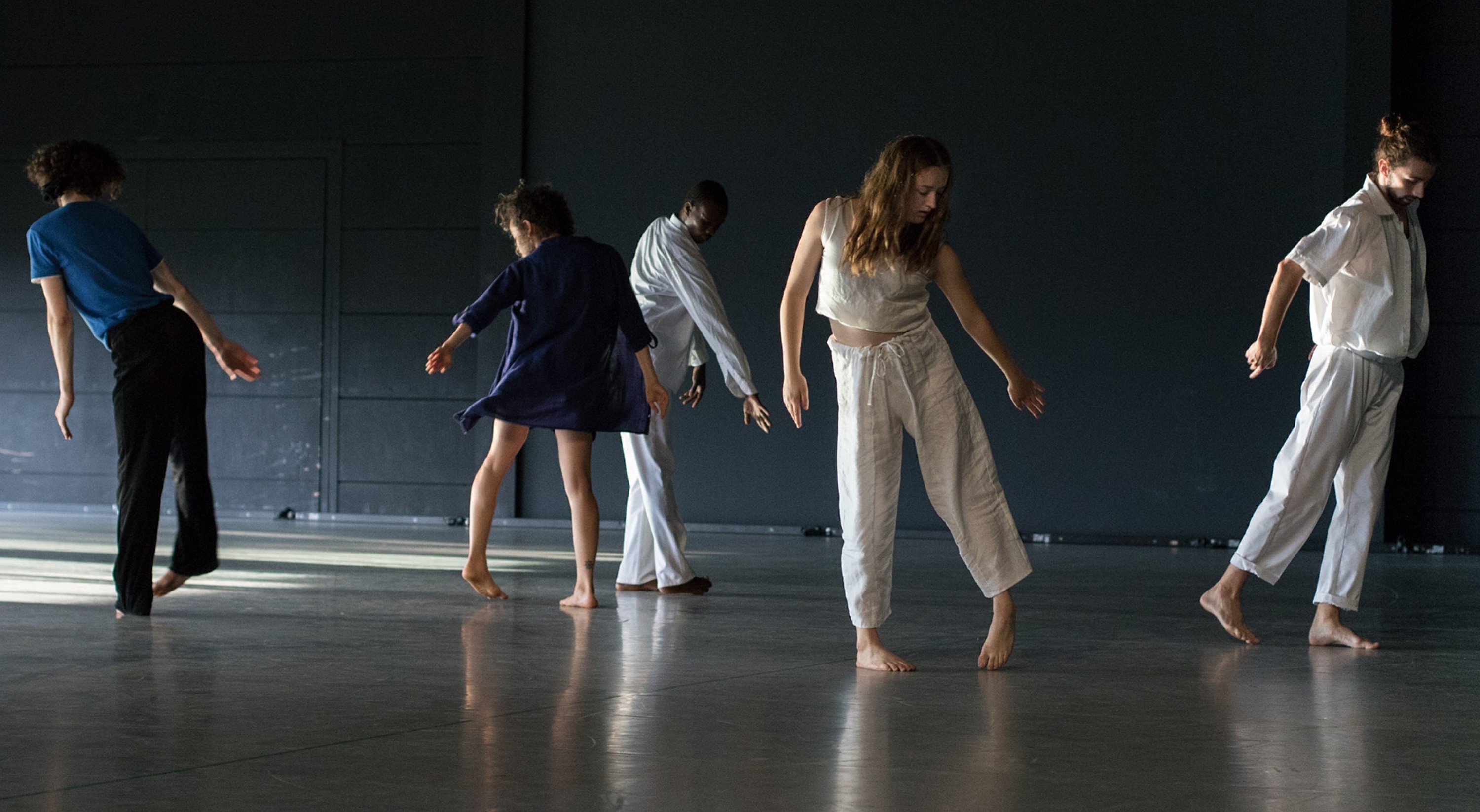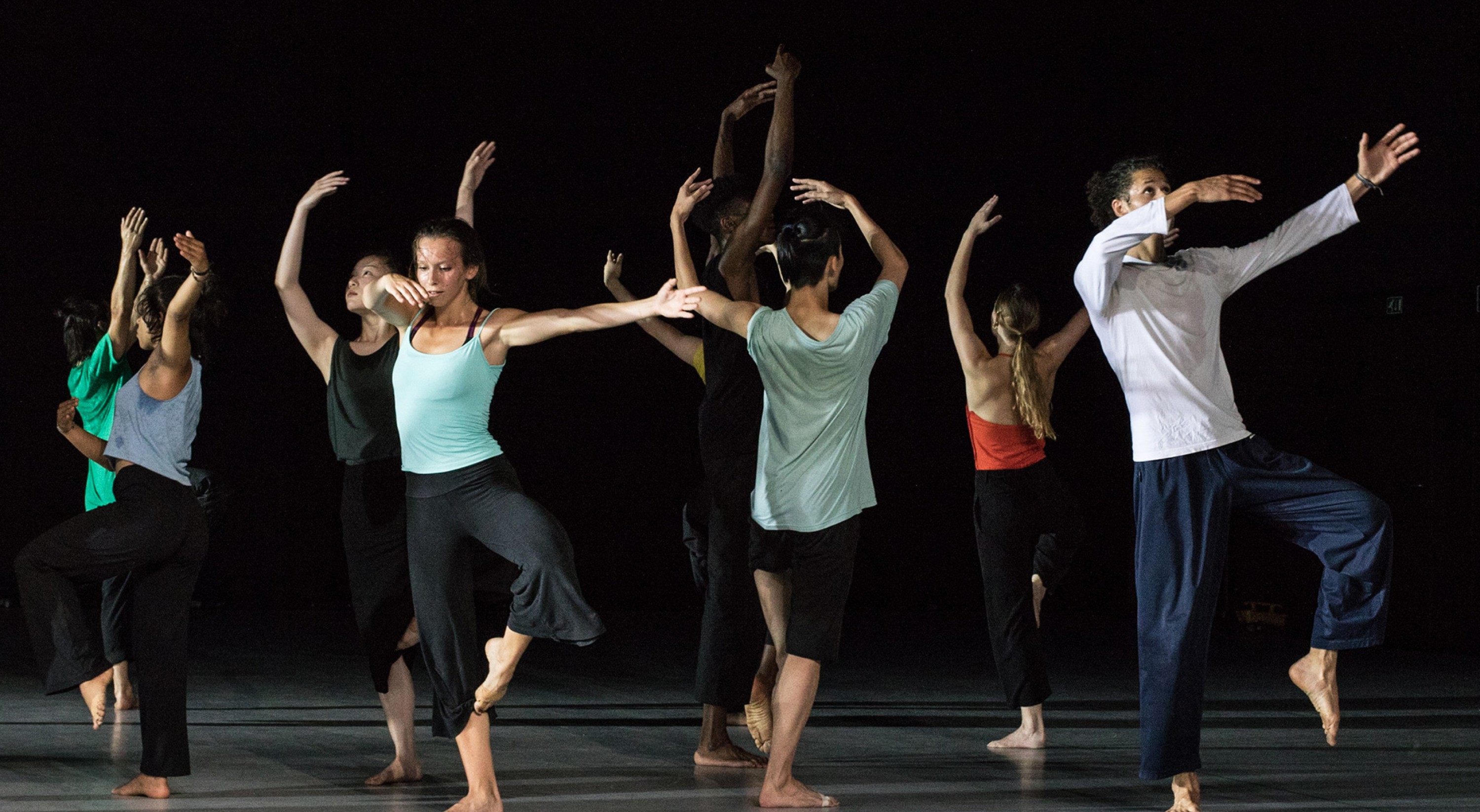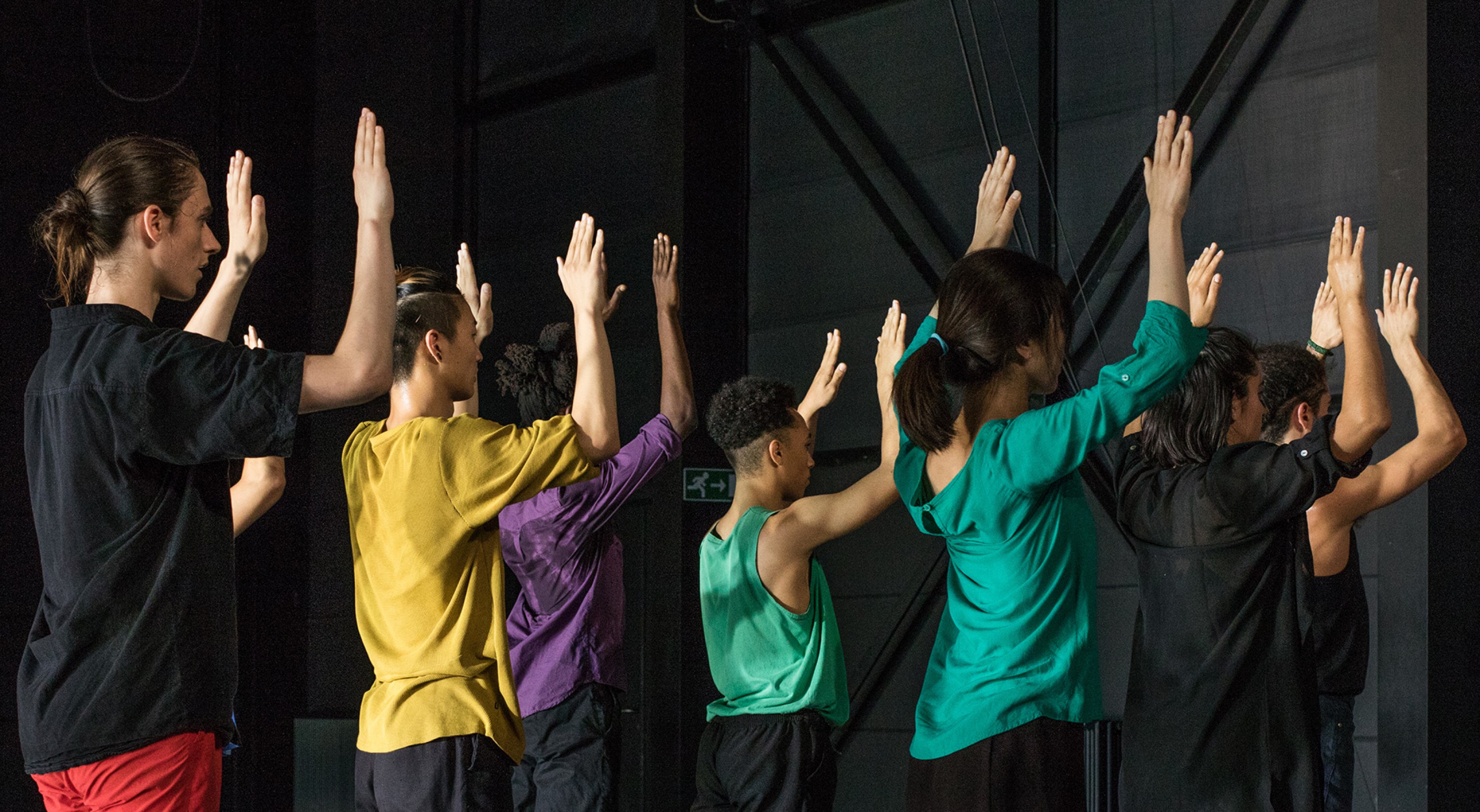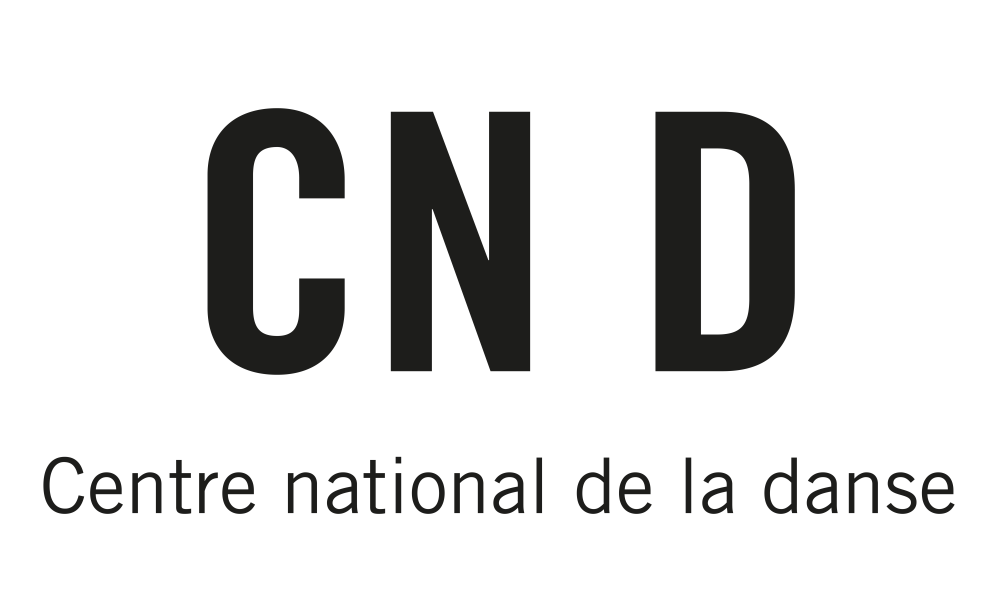Anne Teresa De Keersmaeker
La Fabrique
octoberoct 6 – 7
A CND Centre national de la danse (Pantin) production
A Festival d’Automne à Paris coproduction
In association with CND Centre national de la danse (Pantin) ; P.A.R.T.S. ; Rosas ; Théâtre du Fil de l’eau / Ville de Pantin
The Fondation d’entreprise Hermès is the patron of the Anne Teresa De Keersmaeker Portrait.
In partnership with France Inter
Over the course of a weekend dedicated to spectators, professional and amateur dancers, adults and children alike, visitors will be treated to an on-the-move workshop comprising solos, shows, repertory elements, workshops and screenings. The CND space itself will be springing into movement with Anne Teresa De Keersmaeker’s geometric lines, rhythms, and learning modes.
Throughout her work, Anne Teresa De Keersmaeker has been laying the foundations for an open form of dance, which gives access to its sources and structural principles. Whether it is by means of the P.A.R.T.S. school, founded in 1995, based on the idea of the dancer-creator, the publishing of the Choreographer’s Score notebooks, the Work/Travail/Arbeid exhibition, or the participative, viral Re:Rosas! project, knowledge and transmission are at the heart of this work which shows and shares the processes which have gone into its construction. The overall objective of La Fabrique’s programme is precisely this: to make the work of the dancer accessible to all by drawing on its physical, fun, and participatory dimensions. In conjunction with the Portrait dedicated to the choreographer by the Festival d’Automne à Paris, the CND will be transforming itself into a dancing hive, on the border between living museum and come-as-you-please workshop. Lead by dancers from the company and P.A.R.T.S. students, this weekend concentration of choreographic events features workshops based on repertory works for all, Dancingkids for children, and shows or fragments of different works to seen, heard or experiment with. A performance of the Rosas danst Rosas piece will be echoing its pirated version, Re:Rosas!, giving participants the opportunity to tackle an extract of the famous “chair dance”. On Saturday, extracts from Drumming will follow on from each other hourly, creating the impression of an uninterrupted rhythmical flow. On Sunday, forty-eight P.A.R.T.S students will be performing, non-stop, for four hours, brief solos on the three Atrium stages, giving us ample opportunity to view the full extent of the Rosas rich repertory.



